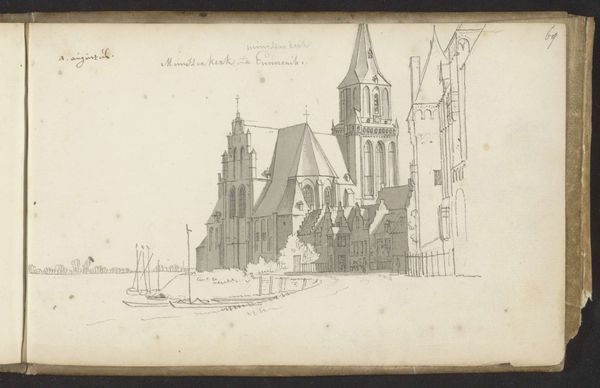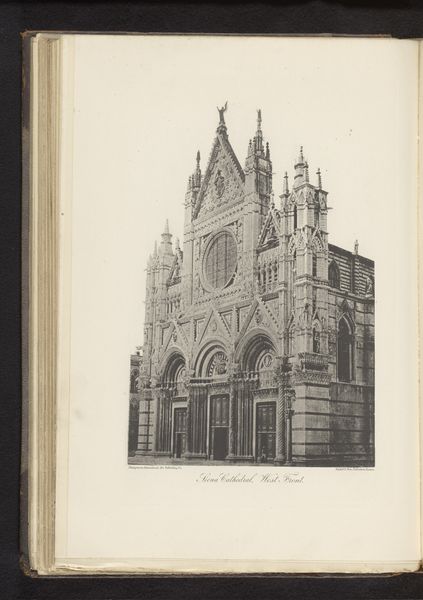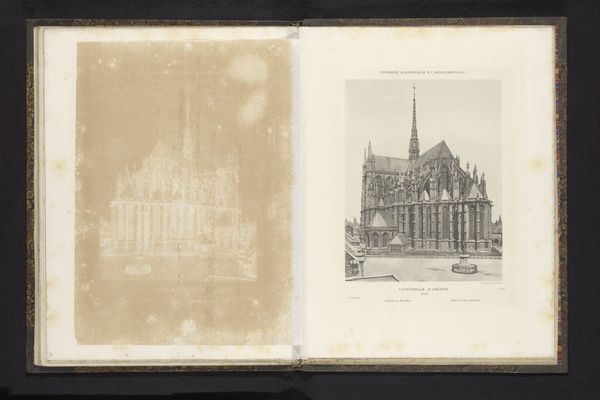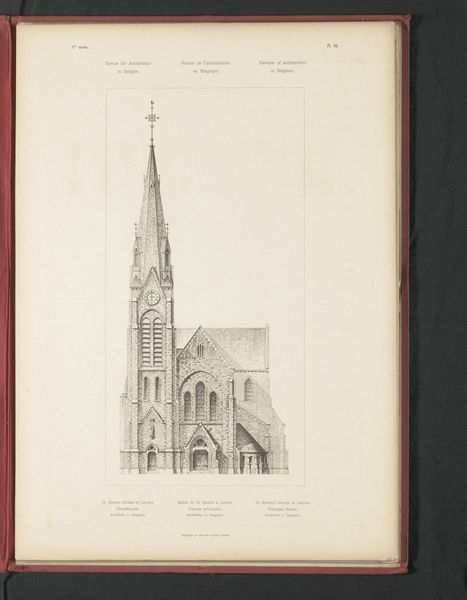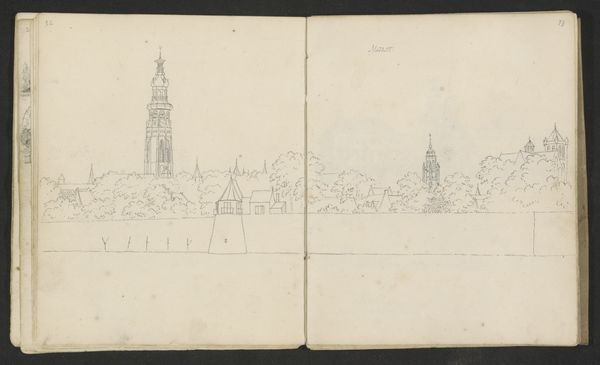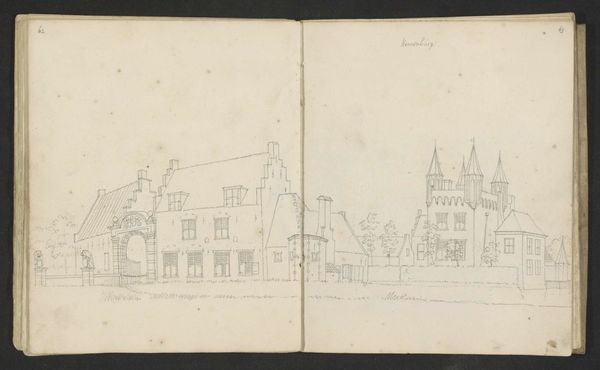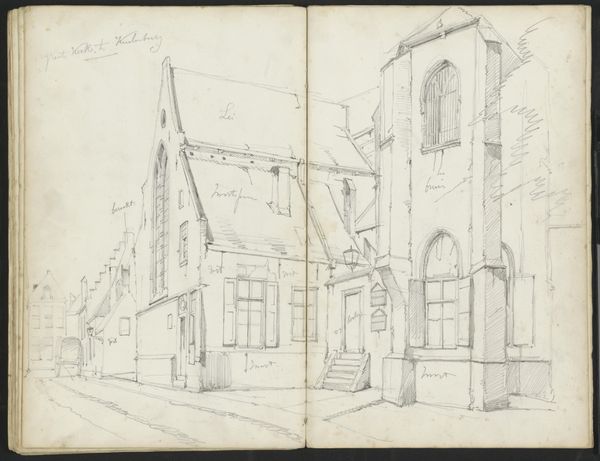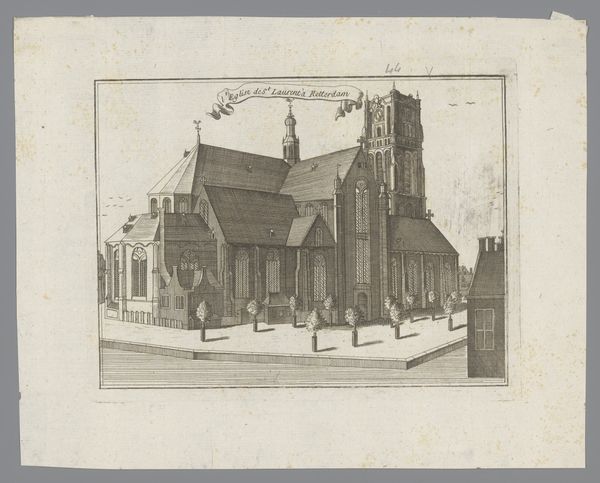
drawing, paper, pen
#
drawing
#
aged paper
#
dutch-golden-age
#
sketch book
#
hand drawn type
#
landscape
#
paper
#
personal sketchbook
#
sketchwork
#
pen-ink sketch
#
line
#
pen work
#
sketchbook drawing
#
pen
#
cityscape
#
storyboard and sketchbook work
#
academic-art
#
sketchbook art
Copyright: Rijks Museum: Open Domain
Curator: Here we have Cornelis Pronk's drawing, "Grote Kerk te Dordrecht," created circa 1728 to 1732. It resides in the Rijksmuseum. Editor: My first impression is of a very light touch, a skeletal elegance achieved with just pen and ink on paper. The bareness, almost an austerity, amplifies the grandeur of the architecture. Curator: Indeed. Churches, especially large ones like the Grote Kerk, carried immense symbolic weight in 18th-century Dutch society. It's not just a building, but a representation of spiritual authority and community identity. Look at how Pronk uses delicate lines to suggest immense height, perhaps to inspire awe in the viewer. Editor: But consider the materials. Pen and ink are relatively accessible, easily transported. Paper too. It suggests a certain practicality. Is this perhaps more of an on-site study, made in preparation for a more formal, elaborate commission, possibly? I'm thinking about how craft and artistry meet within the constraints of availability and the purpose the work serves. Curator: It's possible. But think about the placement in the sketchbook, presented across two pages. Pronk is presenting more than an architectural rendering; it's almost a personal reflection, the church becoming part of a personal visual vocabulary or memory. Editor: Right, the very format lends an air of the provisional. Not precious at all. One wonders how much this kind of rapid, unfussy drawing informed his better known work. There’s also something incredibly appealing about seeing such an iconic and enduring structure rendered with so few… means. It strips the image back to the very concept of the church itself. Curator: Exactly. We can also reflect upon what Pronk’s choice excludes: colour, the texture of stone, the hubbub of the surrounding city. Instead we have pure form that suggests permanence, as if aspiring to transcendence. Editor: Which leads me to see beyond the spiritual symbol to appreciate this document of its physical existence. A convergence of materials, methods and their historical moment. Curator: A rewarding, multi-faceted convergence, indeed. Editor: Precisely. A fruitful, thought-provoking convergence.
Comments
No comments
Be the first to comment and join the conversation on the ultimate creative platform.


